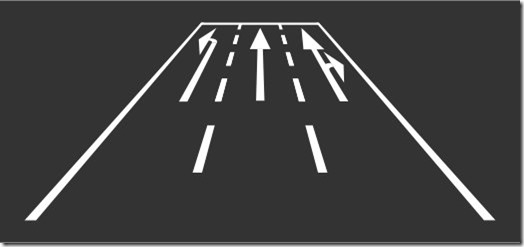Someone found the blog today on this search term:
lane is marked obe route only do i beed ro ibdicate
I didn’t realise that catching a cold could carry over into someone’s typing. Either that, or they were typing in the dark (I hope and pray they weren’t doing it while they were driving, though that’s an increasingly likely problem these days).
The translation is:
lane is marked one route only do I need to indicate?
What this person is asking is to do with road markings and left-only and right-only arrows. The short answer is no. If the lane only goes in one direction and is marked as such then there is technically no need to indicate.
It’s not quite as simple as that, though. You have to ask yourself if the direction the lane goes is clearly visible to everyone behind you – visitors who may not know what you know, for example. And does the volume of traffic make it hard for people to see the arrows on the road?
I suspect the question is related to someone’s driving test, quite possibly because they have already failed one, or because they’re starting to worry about one they have booked. The first thing I’d do is ask your driving instructor – he should know what to do at the junction in question. If you’re not taking lessons with an ADI then you could phone your local test centre and ask for advice. The examiners are usually only to glad to help and they usually know the area well. Unless you clear it up directly with them, the problem you have is knowing what the examiners expect, and this can vary from centre to centre and around the country. There is no absolute answer, unfortunately.
With my own pupils on lessons, if they don’t indicate in a situation where they really didn’t need to (but could have), I always try to get to the bottom of why – did they decide it wasn’t needed, or did they just forget?
Something I always point out, though, is:
- if you signal when you really don’t need to, the worst that could happen is that you’ll get a driver (minor) fault
- if you don’t signal when the examiner thinks you should have, you could get a serious fault
Note that I am referring to the exact query made at the start of this article, and nothing else. Your signals should not be misleading. But nor should your lack of signals be misleading, either. And this applies only to learners and normal drivers only – if you’re doing your Part 2 test, signalling when you don’t need to is a driving fault.
If a pupil tells me they decided not to signal (and if they’re correct), I am happy with that. But if they tell me they forgot, then I’d much rather they signalled without absolute need in future (as long as they aren’t misleading anyone) to develop their MSM skills. Instructors just need to face facts that in the real world you are not going to get all your learners (or normal drivers) to make instant and perfect decisions, and sometimes it pays to err on the side of caution with a technically unnecessary signal.